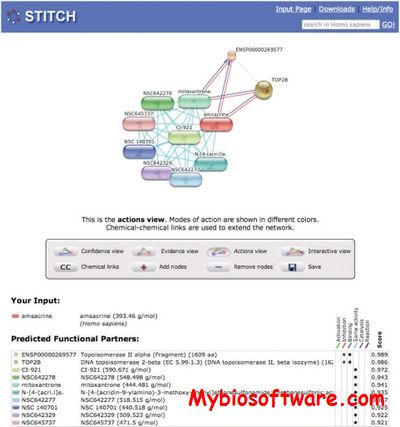STITCH 5.0
:: DESCRIPTION
STITCH (search tool for interactions of chemicals) is a resource to explore known and predicted interactions of chemicals and proteins.Chemicals are linked to other chemicals and proteins by evidence derived from experiments, databases and the literature.
::DEVELOPER
Bork Group
:: SCREENSHOTS

:: REQUIREMENTS
:: DOWNLOAD
 STITCH
STITCH
:: MORE INFORMATION
Citation
STITCH 5: augmenting protein-chemical interaction networks with tissue and affinity data.
Szklarczyk D, Santos A, von Mering C, Jensen LJ, Bork P, Kuhn M.
Nucleic Acids Res. 2015 Nov 20. pii: gkv1277.
Nucleic Acids Res. 2014 Jan;42(Database issue):D401-7. doi: 10.1093/nar/gkt1207. Epub 2013 Nov 28.
STITCH 4: integration of protein-chemical interactions with user data.
Kuhn M1, Szklarczyk D, Pletscher-Frankild S, Blicher TH, von Mering C, Jensen LJ, Bork P.
STITCH: interaction networks of chemicals and proteins.
Kuhn M, von Mering C, Campillos M, Jensen LJ, Bork P
Nucleic Acids Res. 2008 Jan 15; 36: D684-8. Epub 2007 Dec 15; PubMed: 18084021.

 NO
NO